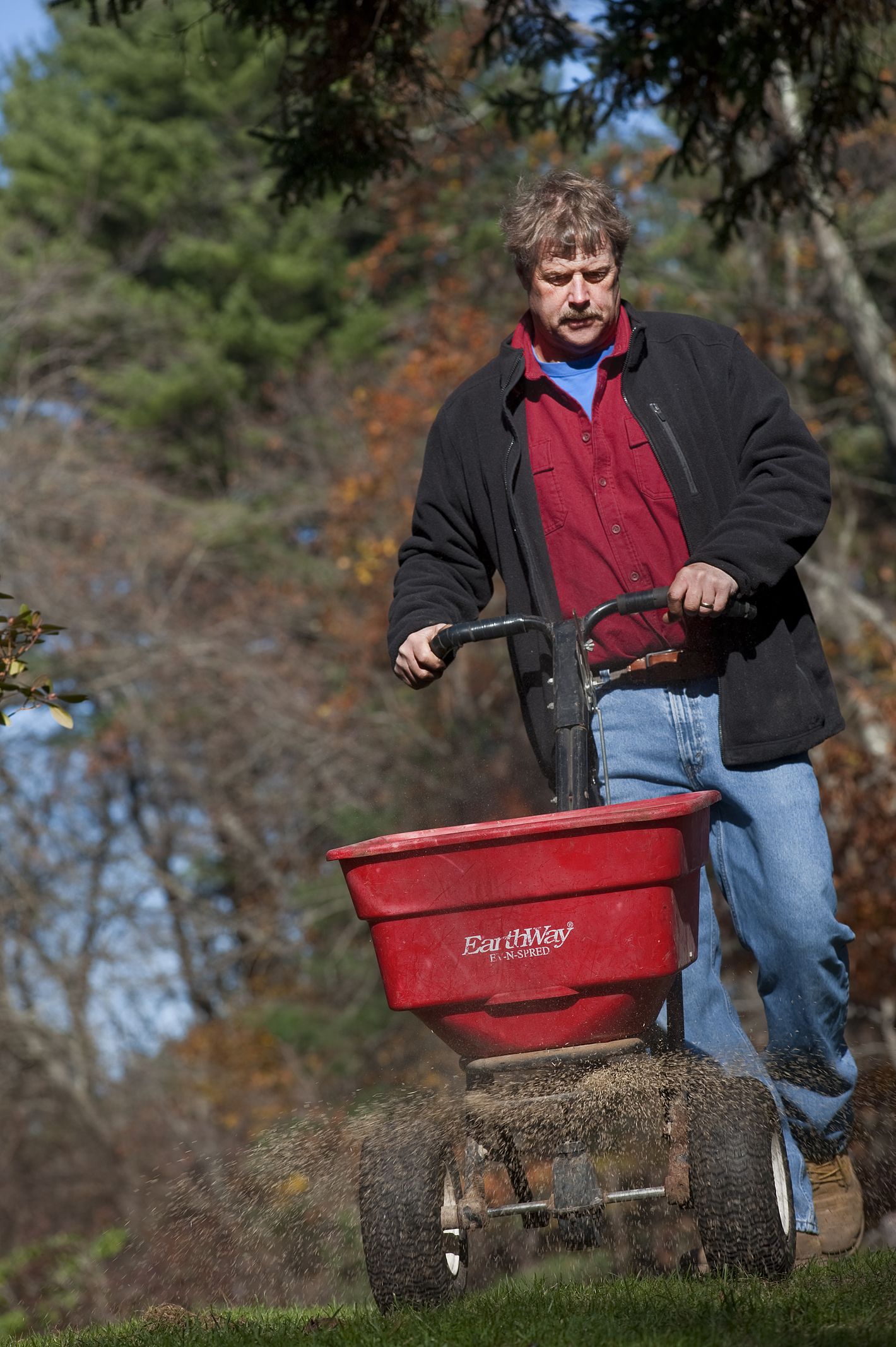Proactive steps in the fall can give your grass the best chance to survive harsh winter conditions and emerge strong in spring. Proper winter prep helps reduce soil compaction, improves nutrient absorption, and strengthens grass roots. This guide will walk you through the essential steps to prepare your lawn for winter.
What Is Winter Lawn Prep?
After a long, hot summer, grass can often be stressed, with signs of thinning, discoloration, and compacted soil. But in the fall, grass is ready to grow again, and now is the time to strengthen and beautify your lawn before the winter.
Key tasks for winter lawn preparation include raking leaves and debris to prevent mold and fungal growth, mowing the lawn to the correct height to avoid matting under snow, and aerating the soil to alleviate compaction and improve water and nutrient absorption. Additionally, applying a fall fertilizer helps nourish the grass roots, while overseeding can fill in thin or bare spots, promoting a denser lawn.
Essential Tools and Materials for Winter Lawn Care
To effectively prepare your lawn for winter, you’ll need:
- Lawnmower
- Power aerator
- Compost and/or fertilizer
- Wheelbarrow
- Spreader (rotary or drop)
- Grass seed
- Leaf rake
- Fertilizer
When Should I Start Winter Lawn Prep?
In most regions, early to mid-fall is the ideal time to start your winter prep routine. This allows enough time for new grass to establish itself before winter sets in. Aim to complete most tasks by late September or early October, depending on your local climate.
Step-by-Step Winter Lawn Preparation Process
Follow these steps to effectively prepare your lawn for winter.
Step 1: Mow Low
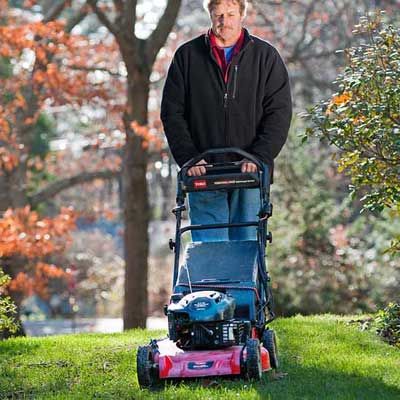
Cut the grass down to 1 to 1½ inches, which makes it easier to aerate and judge how much compost to add.
If your grass is more than 3 inches tall, take it down incrementally over a few mowings — no more than a third of the grass blade at a time. This will help avoid stressing the plants.
Step 2: Aerate
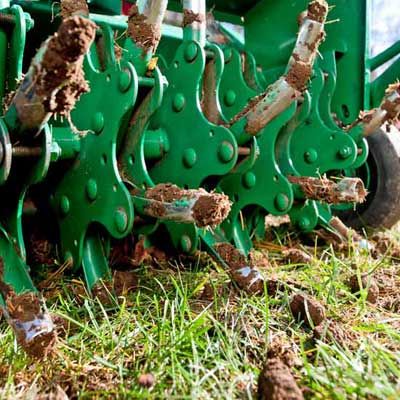
A core aerator’s hollow tines can’t easily penetrate hard, dry ground. On a day when the soil is moist, but not soggy, take a couple of passes around the lawn’s perimeter. This will provide a buffer zone for turning this heavy machine around as you run it back and forth over the rest of the lawn.
An aerator reduces soil compaction and improves air, water, and nutrient penetration. You can rent a power aerator from a local hardware store or garden center. This typically costs around $90 a day, according to our research, but you may be able to rent by the hour for a lower overall price.
Step 3: Top-Dress
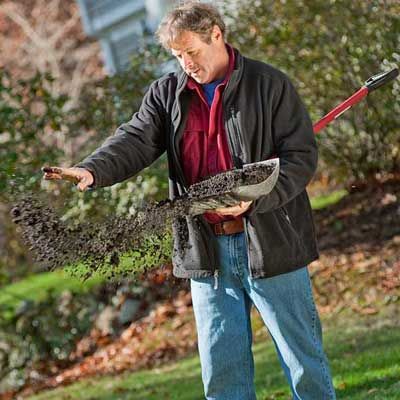
Aged compost helps improve soil structure and provides essential nutrients. Where grass is sparse, prepare for seeding by spreading a half-inch layer of aged compost. I hold a snow shovelful in the crook of my arm, fling it off with my free hand, as shown, and then work it in with a leaf rake.
Be sure your compost is cured: dry, crumbly, and cool to the touch. If it’s hot and smells, it’s more likely to harbor pathogens and burn your lawn.
Step 4: Fertilize
Choose a high-phosphorus fertilizer to stimulate root growth. Pelletized lime may be necessary if your soil test indicates low pH levels. Distribute fertilizer and pelletized lime (if needed) using a rotary spreader. A high-phosphorus fertilizer will stimulate root growth, but you should let a soil test determine the best mix for your conditions.
To keep the spreader from dumping too much fertilizer in one spot, open or close the hopper only when the spreader is in motion.
Step 5: Overseed
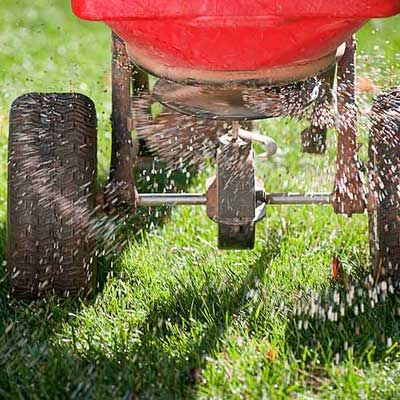
Fill a spreader with seed, set its control to about two-thirds of the bag’s recommendation to account for overlapping passes and distribute the seed over the compost.
As when fertilizing, keep the spreader in motion when opening or closing the hopper. For large areas, you can save time by renting a power overseeder, which slices the turf and drops in the seeds. It eliminates the need to rake in Step 6.
Step 6: Rake and Water
Mix the seeds into the compost with a leaf rake, held tines up. Water lightly — 5 minutes at a time, two to three times a day — until the seeds sprout.
After seeds have sprouted, water once a day for 15 to 30 minutes. Mow the lawn again when the existing grass reaches 3 inches and bag the clippings. After leaves have fallen, cut the grass back to 1½ inches for its long winter nap.
Common Winter Lawn Prep Mistakes To Avoid
When preparing your lawn for winter, be aware of these common mistakes:
- Overwatering: Excess water can lead to fungal growth and root rot.
- Overfertilizing: Too much fertilizer can burn grass roots and harm soil health.
- Neglecting aeration: Skipping this step can lead to compacted soil and poor nutrient absorption.
- Using the wrong grass seed: Choose seeds suited to your climate and lawn conditions.
- Ignoring soil pH: Failing to correct pH imbalances can hinder nutrient uptake.
Professional Winter Lawn Care Services
Deciding whether to hire a professional depends on your time, expertise, and the complexity of your lawn’s needs. The DIY approach is more cost-effective, but it is time-consuming and requires a lot of physical effort. You may also lack the necessary tools and need to pay rental fees.
If you hire a professional landscaping service, expect to pay $50-$100 per hour, according to Angi.
Our Conclusion
Properly preparing your lawn for winter not only maintains its health but also helps it recover from summer stress, setting the stage for a lush, green lawn in the spring. By taking proactive steps in the fall, you can minimize the risk of diseases, pest infestations, and other issues that could further weaken your lawn when winter rolls around.
By following this comprehensive guide, you can ensure your lawn receives the care it needs to withstand winter conditions. Remember to tailor your approach based on your specific grass type and local climate conditions.
